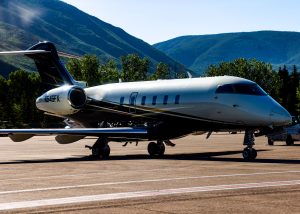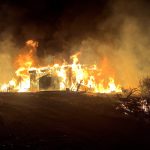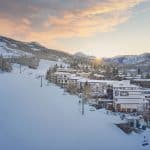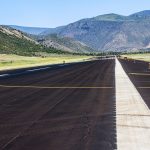Saddle Sore: Bears keep us wild

Tony Vagneur/Courtesy photo
The word is out that “bear season” is upon us. Fattening up for their yearly slumber party, the ursine beasts are easy marks for food aroma and memories of past scores, so tighten up your awareness of bears. Don’t even think of feeding them — it will end in tragedy.
A young bear scampered through the brush just off to my left the other day, apparently frightened by the sound of my truck and horse trailer zipping up the road. Winter will be good to that bear — plenty fat, with long, thick hair, ready for the drop in temperature. Looked like a brown butterball rolling along.
This thing about bears in town is not new — not by a long shot. At least since 1992 when the spring bear hunt was discontinued. That was the start of bears being seen everywhere in town, in the mountains, in the alleys behind restaurants, raiding residential trash cans. I’m not certain the end of the spring hunt was the sole reason the black bear population exploded. Environmental factors may have had a larger effect.
Up until about 1992, I had seen maybe six bears, total. A couple of years later, riding down from cow camp one day, I quit counting bears when the total reached 14, still a couple miles from home. Sows and cubs, everywhere. There were more, but I didn’t count them.
Aspen struggles with wandering bears: on the streets, in the trees, on “riding bikes on the sidewalks.” Wait, they only ride bikes in the circus. My friend, Margaret, lived on North 2nd for a couple of years around 2012 — that’s in the West End for the uninitiated. We’d go out for dinner, come back to her neighborhood, and watch the bears in that vicinity. We’d cruise around in my Jeep, counting, looking, and marveling. We named a couple of big ones, knew where to look for them, like maybe we would look for a lost dog. We got to know them and their hangouts so well, we went out one night on foot …
The West End — with its proximity to Hallam Lake, and the fact so many houses are dark at night — is a wildlife magnet all its own. I’ve seen coyotes strolling down the street, deer grazing in Triangle Park — never saw one there yet but wouldn’t be surprised to see a mountain lion padding down the asphalt, looking for an easy meal.
My first real experience with bears came when I was 9-years-old, in Yellowstone Park. I’ve written about this before, but it bears (pun intended) repeating. I had bolted from the family car to play with a couple of supposed grizzly cubs, seemingly abandoned by their mother. About the time the cubs and I got friendly, there came a loud cracking of branches and the sight of pines swaying — one very angry mamma bear on the move.
My own mother, frozen in fear, was whispering fiercely for me to get back in the car. It all seemed very friendly with the bear cubs, and I remember them milling around my feet as the sow charged across the meadow at a good run. Unafraid, and totally naïve, I stood my ground as the mother bear, slinging slobber from side to side, went around to my left, and as she did so, I ran my hand down her back, feeling the coarseness of her silver-tipped hair. I was totally intrigued. She did a 180 around my backside and, with a loud grunt, sent her cubs fleeing toward the forest. She never even looked back to see if I was chasing her because on some level, she realized someone so crazy couldn’t possibly be a danger to her family. Maybe her motherly intuition saved me. That’s when my mother began to breathe again.
Maybe that’s the thing about living with bears in the mountains: We like to think we’ve tamed the wild, but the bears keep reminding us otherwise. They were here long before the ski lifts and high-dollar houses, and they’ll be here long after. I’ve met a lot of bears since that day in Yellowstone, but none made quite the impression that first one did — wild, powerful, and right where she belonged. My memory likes to think of her as saving my life.
Shout-out to my friends David and Meredith who live in the West End. Tony Vagneur writes here on Saturdays and welcomes your comments at ajv@sopris.net.
Tony Vagneur writes here on Saturdays and welcomes your comments at ajv@sopris.net.
Aspen airport sees more delays, cancellations in wake of new wind-reporting policy
A change from instantaneous wind-speed reporting to average wind-speed reporting aligned with a higher rate of flight delays, diversions, and cancellations this summer at the Aspen/Pitkin County Airport.









